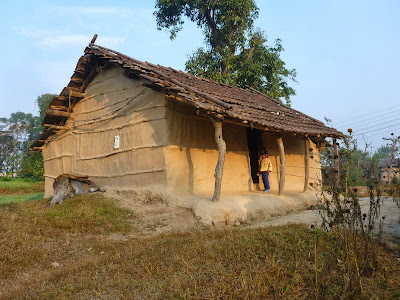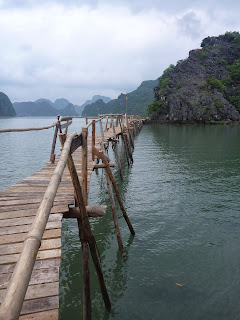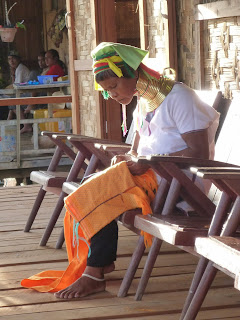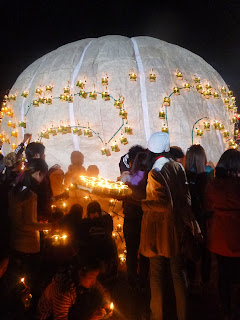Although it's been a hectic month I have at least been spared the stress of the Christmas build up and running around buying presents!
After Myanmar I came to Nepal by plane and landed in Kathmandu. I spent a few days in the city seeing the sights and relaxing with people I had met in the hostel. We sat in the public gardens, ate great food and explored the famous temples. There was the first elections taking place for years and there were political rallies and parades on every street corner, park and from the back of trucks. With over 200 political parties to choose from it was a hard choice for a lot of Nepali people. Plus the communists were blowing up some public buildings and setting busses on fire! It was a very interesting time to be in the capital!
After Myanmar I came to Nepal by plane and landed in Kathmandu. I spent a few days in the city seeing the sights and relaxing with people I had met in the hostel. We sat in the public gardens, ate great food and explored the famous temples. There was the first elections taking place for years and there were political rallies and parades on every street corner, park and from the back of trucks. With over 200 political parties to choose from it was a hard choice for a lot of Nepali people. Plus the communists were blowing up some public buildings and setting busses on fire! It was a very interesting time to be in the capital!
From there we took the bus through the mountains and rice fields to the city of Pokhara which is the place where most people who go trekking in Nepal use as a starting place. We decided to walk the Annapurna Trail which is a 120 mile circuit around the Annapurna mountains in the Himalayas. We took a jeep to the starting village along a road 3 metres wide cut into the side of a steep gorge with a river at the bottom and a 150 foot drop on the side. We started walking and followed the river along the gorge and over a number or dodgy looking rope bridges. There were massive snowy mountains surrounding us and every few miles there was a tea hut where we could buy cups of hot yaks milk to warm us up. We were allowed to sleep in the tea shops provided we ate a meal or two there. The nights were so cold because we were so far above sea level that it was difficult to sleep.
After 7 days we finally reached the 'high point' of the Annapurna circuit - the Thorong Pass. At over 19,000 feet above sea level its the highest mountain pass in the world. We set off at 4am in the dark so we could make it over before sunset and by about two thirds of the way up I was starting to feel light-headed due to altitude sickness. For all of us it was a struggle to keep moving and you had to concentrate on using the least amount of energy by taking small and slow steps so we were barely moving. I was dizzy, disorientated, found it hard to think straight and had to breathe about 4 times the regular rate just to get enough oxygen into my lungs but even this wasn't enough and I kept thinking I would pass out. It was one of the scariest moments of my life because I was sure I was about to suffocate. There were huge Himalayan vultures circling above us, probably waiting for us to die!


Instead of going back down as all the advice suggested I kept on going - there was no way I wasn't going to get to the top no matter what. As we went even higher I started to feel better, strangely, and we finally made it to the summit where we took photos and rested before going down the other side.
We spent a few more days trekking through desert areas close to the Tibetan border before finishing and staying in Pokhara to enjoy all the treats we hadn't had for two weeks such as showers, cake and decent beds!


I am currently in village in the Chitwan National Park in Nepal where I will spending the next 3 weeks until boxing day. There are mountains as far as you can see and lots of forest and paddy fields with old houses or huts in between. I am staying with the head teacher of the school where I am teaching - everyone calls him 'Principal Sir' and his wife is 'Madam'. All of the teachers are known by their first names - I am 'Andy Sir' which I quite like!
The school has 800 pupils aged between 3 and 17 and they learn English right from the start. They aren't allowed to speak in Nepali except in the specific Nepali language classes so as a result their English skills are excellent. I have been teaching the children aged 7 and above which has been interesting. For assembly all the children stand in rows in the playground and carry out army-style discipline exercises and then one of the teachers plays the national anthem on their mobile holding it against the tannoy microphone and all 800 children sing along with their eyes closed and their hands on their chests.
Everyone is so friendly and im finding it hard to have any time on my own because everyone wants to offer help, practice English or just spend time with the first foreigner to visit the village. My Nepali language skills are improving every day and I can hold a decent conversation as a result of eveyones willingness to teach me. Whenever I walk around the village people call to me from far away, and at first I wondered how they knew it was me. I soon realized that I must be the only person in the district who has a head that looks more like an ostrich egg than the black hair that everyone else has. Below are some of the children's and teacher's houses - made of mud and bamboo and typical of this area.
I have become good friends with a younger teacher called Bhim who lives in the next village. After school I have been going with him on his motorbike to his home which he shares with his parents and spending time with his family who treat me like some kind of prince! The house is a small cottage on one of the dirt roads between the paddy fields with a fire outside to cook on and cows and goats in the stable next to it. They are very proud that the first foreigner to come to the village is at their house and a constant stream of neighbours come by to look at me, and asking me all the same questions (How old are you? Are you married? Why not?) They have been teaching me how to eat curry and rice with my hands (so much harder than you think!) and how to cook Nepali food and cups of masala tea. Each morning we have to milk the three cows and take the buckets of milk to the government collection point where it is measured and they give 35 rupees per litre for it.
 |
| Bhim's family's kitchen with the cows in the stable behind. |
Over the next few weeks I will keep teaching and we will go into the forest where you can have elephant rides and try to see the rare rhinos and tigers. I will leave here on the 26th December to go to India, though I can't imagine ever wanting to leave this place. I don't think I could live here permanently though - I earn more in 3 weeks of teaching than the teachers at this school earn in a year which puts my life (and spending) into perspective... Maybe I don't need to buy that iPhone when I return home!





















































